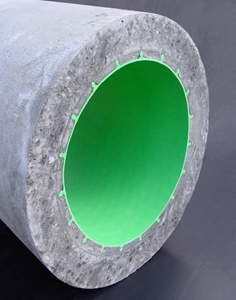
Thousands of kilometres of Australian water pipes contain hazardous asbestos cement that is coming to the end of its life, an industry organisation has revealed.
The Water Services Association of Australia said replacing the material across 40,000 kilometres of piping could cost consumers up to $8 billion. Managing Director Adam Lovell told the ABC that utilities companies are currently monitoring the situation to see how rapidly changes should be made.
“You don’t necessarily want to go rushing out and replace it all, either. The current standard practice, the safest practice, is to remove sections of the pipeline … rather than trying to repair it on site,” he explained.
Tanya Segelov, a member of the council for the Asbestos Safety and Eradication Agency (ASEA), said Australian asbestos manufacturing firm James Hardie was responsible for building many of the country’s water pipelines.
She added that there are now millions of ageing pipes in the ground that contain asbestos cement. According to the ABC, there is no evidence that asbestos has contaminated drinking water, but people could still inhale harmful dust if the pipes are ever disturbed.
Asbestos is linked to several life-threatening lung diseases, including mesothelioma and asbestosis. The material was commonly used in building materials during the mid-19th century, with the ASEA claiming 1.5 million tonnes of asbestos was imported into country between 1930 and 1983.
Claiming compensation for dust diseases
People who are exposed to asbestos in the workplace can pursue compensation claims if they later develop serious illnesses.
Trevor Grant, former sports journalist for The Age and the Herald, believes asbestos at the newspaper offices where he worked caused him to contract mesothelioma.
“There were pipes that I discovered were regularly cleaned in The Herald building that contained asbestos,” he told the ABC. “In The Age building, when they first built it, they just sprayed it everywhere as a fire retardant, I gather.”
Mr Grant claimed there is not enough awareness around mesothelioma and urged the authorities to do more to warn people of the dangers of asbestos.
Campaigners against asbestos agree, but argue that needless bureaucracy is hampering the ASEA from fulfilling its role.
Barry Robson, Asbestos Diseases Foundation of Australia president, said victim support groups called for the agency’s implementation for more than a dozen years, only for it to now struggle with underfunding.

